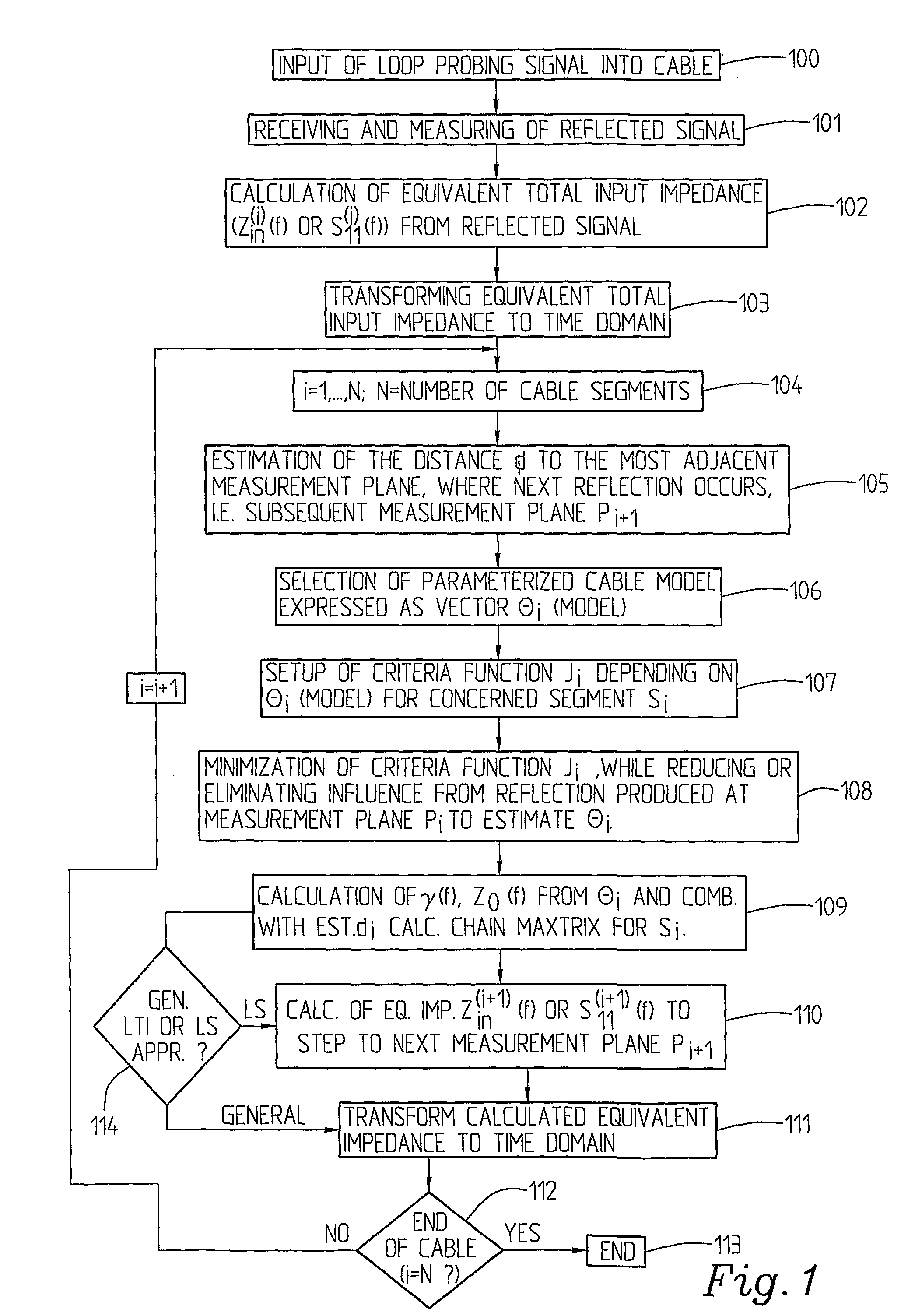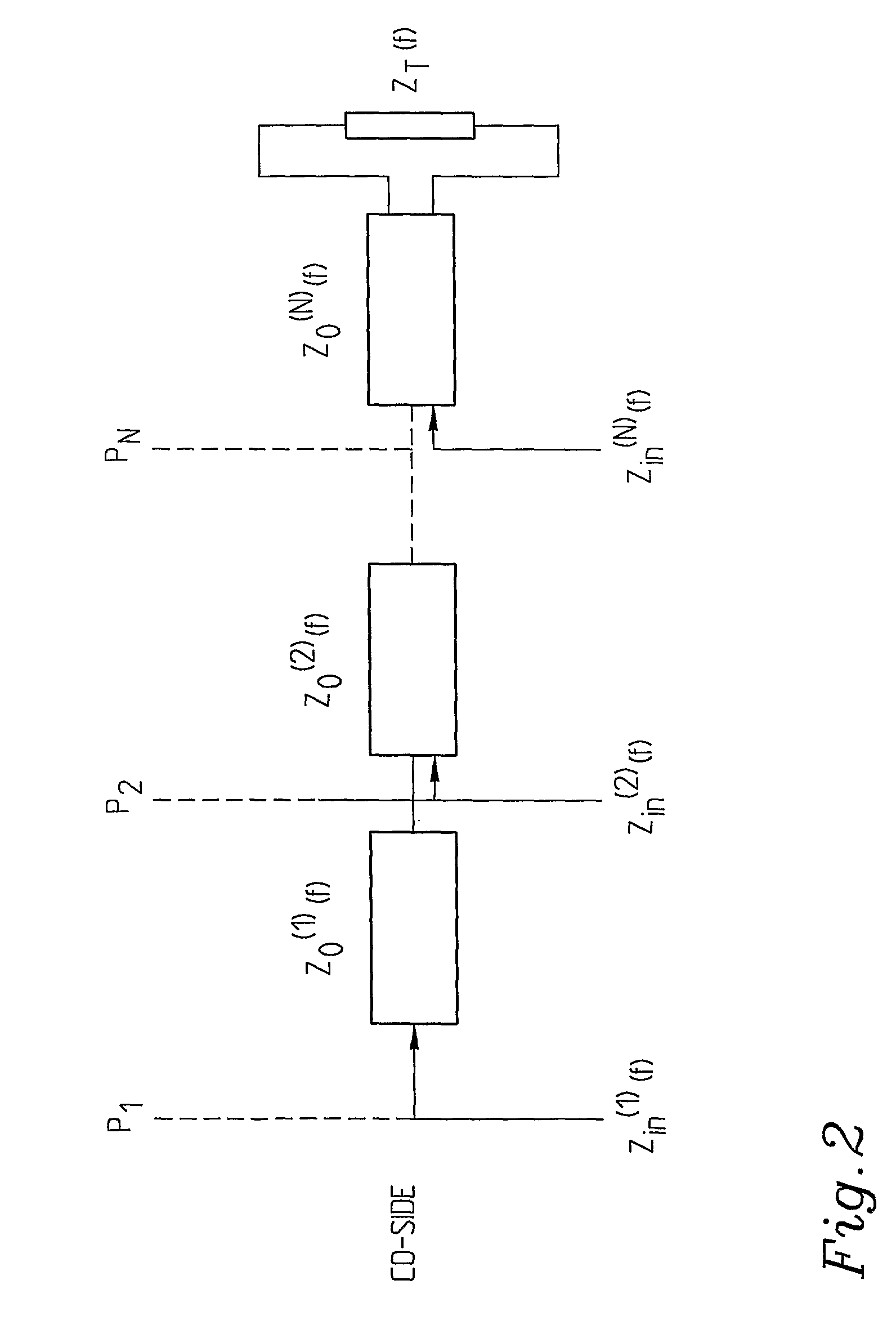Method and a system for cable or subscriber loop investigation performing loop topology identification
a topology identification and cable or subscriber technology, applied in the direction of noise figure or signal-to-noise ratio measurement, line-transmission details, instruments, etc., can solve the problems of multi-dimensional optimization, unsatisfactory existing documentation, and well-designed filters optimized for a cable length of about 1 km, so as to facilitate transmission line or subscriber loop investigation, facilitate maintenance, and facilitate troubleshooting
- Summary
- Abstract
- Description
- Claims
- Application Information
AI Technical Summary
Benefits of technology
Problems solved by technology
Method used
Image
Examples
Embodiment Construction
[0027]The concept of the present invention is based on successive modelling and estimation. The characteristics of each cable segment is iteratively estimated and a loop topology identification can be carried out through splitting of the task into subtasks which can be solved more easily.
[0028]The loop topology identification, in the following denoted LTI, can be broken down into the following identification / estimation tasks assuming that no load coils are present. The problems associated with load coils and the detection of such depends on the used measurement equipment, where normal xDSL modems may not have access to the required low frequencies needed for the detection of such impairments. The present invention is general and independent of access to low frequencies, and can of course be easily combined with a load coil detector. Hence the number of cable segments needs to be identified as well as the length of each segment. Furthermore the kind of the segment, for example a seri...
PUM
| Property | Measurement | Unit |
|---|---|---|
| cable length | aaaaa | aaaaa |
| cable length | aaaaa | aaaaa |
| thickness | aaaaa | aaaaa |
Abstract
Description
Claims
Application Information
 Login to View More
Login to View More - R&D
- Intellectual Property
- Life Sciences
- Materials
- Tech Scout
- Unparalleled Data Quality
- Higher Quality Content
- 60% Fewer Hallucinations
Browse by: Latest US Patents, China's latest patents, Technical Efficacy Thesaurus, Application Domain, Technology Topic, Popular Technical Reports.
© 2025 PatSnap. All rights reserved.Legal|Privacy policy|Modern Slavery Act Transparency Statement|Sitemap|About US| Contact US: help@patsnap.com



